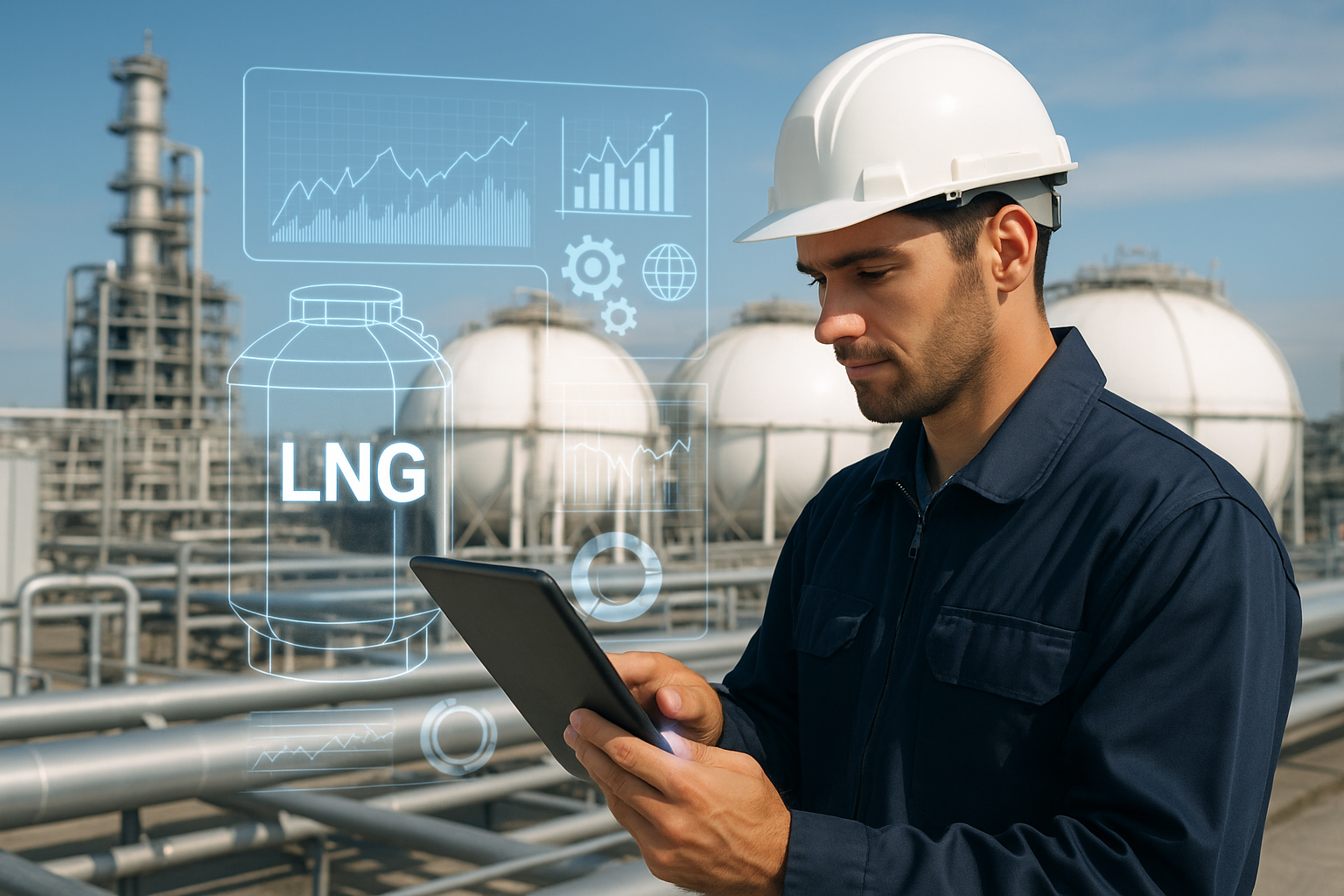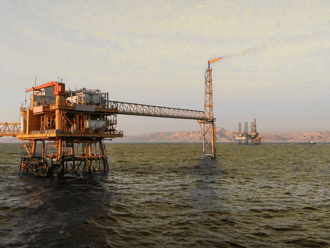August 27, 2025
LNG at a Crossroads: How Digital Twins Are Redefining the Future of Gas

LNG fuels the Global Energy Transition
The global LNG sector is experiencing unprecedented demand growth, fueled by energy security concerns, Asia’s rising consumption, and Europe’s efforts to diversify supply. According to the International Energy Agency (IEA), LNG trade grew by nearly 6% in 2023, and demand is expected to continue rising through 2030 as natural gas plays a dual role: supporting baseload reliability while enabling coal-to-gas switching in emerging economies (IEA, 2023).
Yet the LNG industry also faces mounting challenges:
- Carbon intensity of liquefaction and shipping makes LNG a target in climate debates.
- Operational complexity across multi-decade assets and global value chains requires precision and resilience.
- Volatility in pricing and geopolitics highlights the need for operational agility and transparency.
Digital transformation has emerged as a strategic imperative, and digital twins in particular are becoming the backbone of future-ready LNG operations.
Beyond Buzzwords: What Digital Twins Deliver in LNG
A digital twin is not simply a 3D visualisation; it is a dynamic, contextualised digital environment that integrates engineering and design data, real-time IoT and sensor feeds, simulation and predictive models, and enterprise and supply chain systems.
For LNG producers, this convergence unlocks a range of high-value applications:
- Operational Efficiency and Reliability
Liquefaction trains are capital-intensive and energy-hungry. Predictive maintenance powered by digital twins helps operators detect anomalies early, optimise shutdown schedules, and extend asset life. McKinsey estimates predictive maintenance can reduce downtime by 30–50% and lower maintenance costs by 10–40%(McKinsey, 2018). - Sustainability and Emissions Management
Methane slip, flaring, and energy intensity are under greater scrutiny. Digital twins enable real-time emissions monitoring, automated reporting, and scenario modelling to test decarbonisation strategies. The World Bank notes methane reductions are the lowest-cost decarbonisation lever in LNG (World Bank, 2022). - Remote Operations and Workforce Safety
LNG facilities are often remote and hazardous. Digital twins support remote monitoring and collaboration, reducing the need for physical presence while improving workforce safety. Shell has shown digital twins enable monitoring of 15,000+ equipment items remotely, cutting offshore headcount. - Resilience and Agility in Volatile Markets
Digital twins give executives and traders real-time visibility into production performance, shipping constraints, and terminal utilisation.
Case Studies: LNG Digitalisation in Action
- LNG Canada: Embedded digital twin technology during construction improved transparency, reduced rework, and accelerated commissioning.
- Shell: Integrates digital twin platforms across its LNG portfolio, reducing downtime and enabling measurable emissions reductions.
The Kongsberg Digital Approach
Kognitwin® Industrial Work Surface represents the next generation of operational digital twins for LNG. Unlike narrow applications, Kognitwin contextualises data across the asset lifecycle:
- Design and construction: Integrates EPC data, P&IDs, and 3D models into a living digital backbone.
- Operations: Provides real-time monitoring, predictive analytics, and simulation via K-Spice® and LedaFlow® - enabling dynamic process simulation, multiphase flow simulation, etc.
- Sustainability: Embeds emissions tracking and automated ESG reporting.
- Decision support: Offers executives and engineers a unified environment for scenario testing and decision-making.
Operators using Kognitwin report efficiency gains of 15–20%, faster commissioning, and reduced OPEX.
Conclusion: A Strategic Imperative
The LNG industry is at a crossroads. Those who continue with siloed, analogue approaches risk falling behind. Those who embrace digital transformation, anchored by digital twin platforms, will thrive in the energy transition.
Kongsberg Digital’s Kognitwin® demonstrates that the future of LNG is connected, contextualised, and carbon-aware — the pathway to safer, smarter, and more sustainable LNG operations.
Please use the form below to book a meeting for a 1/1 demo session.
Book a meeting
Author

Kongsberg Digital
Kongsberg Digital is a provider of next-generation software and digital solutions to customers within oil and gas, chemicals and offshore wind. Its Industrial Work Surface, powered by the Kognitwin® platform, is redefining how industries work with data, insight and decision-making.





